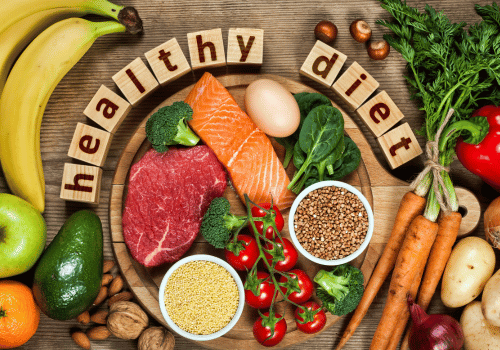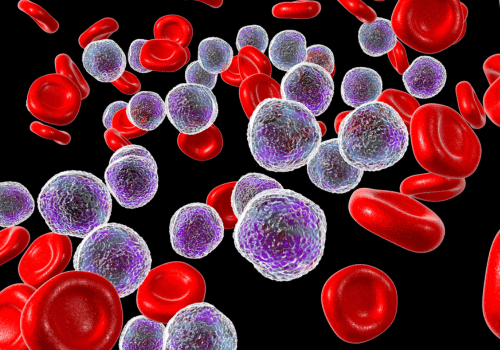Modern life often pushes health aside. Now is the time to reimagine healthy eating as something you do for life; not something you have to do as part of your duties or obligations. This comprehensive guide is your path toward adopting Smart Healthy Eating Habits and leading a balanced, fulfilling existence.
1. The Importance of a Healthy Diet

A healthy diet is more than just a calorie count; it’s the bedrock of overall well-being. By providing essential energy and nourishment, it enables our bodies to function optimally. Here are the key points to consider:
1.1 Nutrient-Rich Foods
- Fruits and Vegetables: These colorful wonders are packed with vitamins, minerals, and antioxidants. Aim for at least 5 portions of a variety of fruits and vegetables daily.
- Whole Grains: Opt for wholewheat pasta, brown rice, and wholegrain bread. These starchy foods provide energy and essential nutrients.
- Lean Proteins: Incorporate beans, pulses, fish, eggs, and lean meats. Pulses are excellent alternatives to meat, offering protein and fiber while being low in fat.
- Portion Control: Even healthy foods can lead to imbalances if consumed excessively. Practice mindful eating and savor each bite.
- Variety: Diverse food choices ensure a broad spectrum of nutrients. Balance your meals by including different food groups.
1.2 Role of Carbohydrates and Proteins

- Carbohydrates: These fuel our bodies. Opt for whole grains and starchy foods. Remember, moderation is key.
- Proteins: Essential for tissue repair and overall health. Choose lean cuts of meat, fish, and plant-based proteins like pulses.
- Meal Planning: Create balanced meals that suit your preferences and lifestyle. Plan ahead to avoid unhealthy choices when hungry.
- Mindful Eating: Pay attention to hunger and fullness cues. Avoid mindless snacking and emotional eating.
- Sustainability: Healthy eating isn’t a short-term fix. It’s about creating habits that last a lifetime.
- Physical Activity: Regular exercise complements a nutritious diet. Find activities you enjoy and make them part of your routine.
2. Boosting the Immune System
A robust immune system is your body’s front-line defense against illnesses. Proper nutrition plays a pivotal role in strengthening immunity. Let’s delve into the science and practical tips:

Immune-Boosting Nutrients
- Vitamin C: Found in citrus fruits, bell peppers, and strawberries, vitamin C enhances immune function and helps fight infections.
- Zinc: Essential for immune cell function. Include zinc-rich foods like nuts, seeds, and legumes.
- Probiotics: These friendly bacteria support gut health, which is closely linked to immune function. Yogurt, kefir, and fermented foods are excellent sources.
Practical Tips
- Citrus Power: Start your day with a glass of fresh orange juice or a grapefruit. The vitamin C content will give your immune system a boost.
- Garlic Magic: Garlic contains allicin, known for its immune-enhancing properties. Add minced garlic to your meals.
- Green Tea: Rich in antioxidants, green tea supports immune health. Sip on a cup daily.
3. Enhancing Mood and Mental Health

A healthy mind isn’t just a state of being; it’s a journey nurtured by good nutrition. Let’s embark on this exploration to understand how what we eat can significantly influence our mood and mental well-being.
The Gut-Brain Connection: A Happy Harmony
The intricate relationship between our gut and brain plays a pivotal role in shaping our mood. By embracing probiotics and fiber-rich foods, we pave the way for a healthier gut, which, in turn, contributes to positive mental health. Omega-3 fatty acids, found in foods like salmon, mackerel, walnuts, and flaxseeds, become our allies, reducing inflammation and supporting optimal brain function.
Mood-Boosting Meals: A Symphony of Flavors
Delight your taste buds and nurture your brain with mood-boosting meals:
- Salmon Salad: A delectable combination of omega-3-rich salmon, leafy greens, and creamy avocado.
- Berries Galore: Blueberries, strawberries, and raspberries, bursting with antioxidants that shield our brain cells.
Sustaining Energy Levels: The Key to Productivity
Maintaining consistent energy levels is the secret to staying productive and focused. Here’s how you can optimize your vitality:
- Macro-nutrients for Energy: Choose whole grains like oats and quinoa for sustained energy, complemented by proteins from lean meats, tofu, and legumes. Healthy fats from avocado, nuts, and olive oil will keep your energy levels steady.
- Smart Snacking: Elevate your energy with nutrient-packed snacks like almonds, pumpkin seeds, and cashews. Don’t forget the power of hydration – sip water throughout the day to avoid the energy-draining effects of dehydration.
Longevity Through Healthy Eating: Aging Gracefully
A well-nourished body ages with grace, and the path to longevity is paved with mindful choices:
- Anti-Aging Foods: Berries, with their antioxidant-rich profile, safeguard against cellular damage. Leafy greens like spinach, kale, and Swiss chard provide essential nutrients, while turmeric, with its active compound cur-cumin, offers anti-inflammatory properties.
- Lifestyle Habits: Incorporate daily movement through regular exercise to stay agile and add precious years to your life. Embrace mindfulness practices like meditation, deep breathing, or yoga to reduce stress and enhance your overall well-being.
Your plate is not just a canvas for flavors; it’s a masterpiece for health and vitality. Each meal is an opportunity to invest in your well-being, supporting a healthy mind and a vibrant life. So, savor each bite, and let your journey to well-being unfold with every nutritious choice you make.
4. Understanding Alkaline vs. Acidic Foods
Maintaining the right pH balance in your body is essential for overall well-being. In this article, we’ll delve into the science behind pH, explore the importance of balancing acidity and alkalinity, and provide practical tips for adopting an alkaline diet.

What Is pH?
- pH Scale: The pH scale measures acidity or alkalinity, ranging from 0 (highly acidic) to 14 (highly alkaline). A pH of 7 is considered neutral.
- Body pH: Your ideal blood pH falls slightly on the alkaline side, between 7.35 and 7.45. However, your stomach is typically acidic (around pH 3.5) to aid digestion.
Balancing Acidity and Alkalinity
- Food Influence: While the pH of food matters less than how your body processes it, some foods can impact your overall pH balance.
- Plant-Based Focus: Prioritize fruits, vegetables, nuts, and legumes. These foods are more alkalizing and contribute to a balanced pH.
It’s important to be mindful on pH because pH Imbalance can have Consequences like.
- Metabolic Acidosis: Chronic excess acidity can lead to metabolic acidosis, affecting kidney function.
- Common Causes: High protein intake, processed meats, and excessive sodium contribute to acidity.
Identifying Acidic and Alkaline Foods
- Acidic Foods: These include meat, dairy, grains, and alcohol.
- Neutral Foods: Natural fats, milk, starches, and sugars fall in the neutral category.
- Alkaline Foods: Fruits, nuts, legumes, and vegetables are alkalizing.
Alkaline Diet for Health
- Balance: Aim for a mix of alkaline-forming and acid-forming foods.
- Alkalizing Vegetables and Fruits: Include spinach, kale, berries, and citrus fruits in your diet.
- Meal Plans: Create meals with alkaline-forming ingredients.
- Benefits: An alkaline diet can lead to improved digestion, reduced inflammation, and overall vitality.
Understanding pH balance and making informed food choices can positively impact your health. By incorporating more alkaline foods into your diet, you’ll promote overall well-being and maintain a harmonious internal environment.
5: Decoding the Food Pyramid
The food pyramid visually guides us toward a balanced diet. Let’s explore its layers:

Layers of the Food Pyramid
- Foundation Layer: Plant-based foods like fruits, vegetables, whole grains. They form the base for a healthy diet.
- Middle Layer: Dairy, lean meats, and alternatives. Moderation is key.
- Top Layer: Limit fats, oils, and sweets. Use sparingly.
Healthy Eating Guidelines
- Hydration: Water is your primary drink.
- Flavor Boost: Use herbs and spices for taste and health benefits.
- Limit Salt and Added Sugar: Opt for natural sweetness.
Stages of Change for Healthy Living
Understand the stages of pre-contemplation, contemplation, preparation, action, and maintenance. Explore strategies for each stage, facilitating a gradual transition to a healthier lifestyle. This section focuses on the behavioral aspects of adopting a healthy lifestyle, providing actionable steps for individuals at different stages of readiness.
Real-life testimonials and success stories can be shared to inspire readers at various stages of their health journey. Practical advice on overcoming common challenges and staying motivated is provided, ensuring a smooth progression through each stage.
Conclusion
Embarking on a journey toward a healthier lifestyle is a continual process. By adopting the principles outlined in this guide and incorporating them into your daily life, you can achieve better health and experience a fulfilling, joyful, and lasting well-being. Make today healthier than yesterday and pave the way for a brighter and healthier future.
